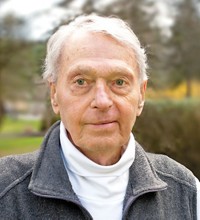Advertisement
Grab your lab coat. Let's get started
Welcome!
Welcome!
Create an account below to get 6 C&EN articles per month, receive newsletters and more - all free.
It seems this is your first time logging in online. Please enter the following information to continue.
As an ACS member you automatically get access to this site. All we need is few more details to create your reading experience.
Not you? Sign in with a different account.
Not you? Sign in with a different account.
ERROR 1
ERROR 1
ERROR 2
ERROR 2
ERROR 2
ERROR 2
ERROR 2
Password and Confirm password must match.
If you have an ACS member number, please enter it here so we can link this account to your membership. (optional)
ERROR 2
ACS values your privacy. By submitting your information, you are gaining access to C&EN and subscribing to our weekly newsletter. We use the information you provide to make your reading experience better, and we will never sell your data to third party members.
Awards
Kavli Foundation announces 2022 prizes for nanoscience and neuroscience
Scientists honored for development of self-assembled monolayers and for discovery of genes underlying brain disorders
by Celia Henry Arnaud
June 1, 2022

On June 1, the Kavli Foundation announced the winners of the 2022 Kavli Prizes in Nanoscience and Neuroscience. Four scientists are sharing each of the prizes. Each prize is worth $1 million, which will be divided evenly among the winners.
In the nanoscience category, David L. Allara of the Pennsylvania State University, Ralph G. Nuzzo of the University of Illinois Urbana-Champaign, Jacob Sagiv of the Weizmann Institute of Science, and George M. Whitesides of Harvard University are being recognized for their contributions to surface science through the development of self-assembled monolayers and molecular-scale coatings.




The laureates did not invent monolayer films—those had been fabricated decades earlier by Katharine Blodgett and Irving Langmuir. But while Langmuir-Blodgett films are formed at the interface between air and liquid, the prize winners’ self-assembled monolayers are on solid surfaces. “That’s really enabled what I like to call adding the chemical dimension to nanolithography,” says Paul S. Weiss, an expert on surface chemistry at the University of California, Los Angeles who is a former colleague of Allara and Nuzzo.
Sagiv created films of molecules adsorbed on glass and metal surfaces. Using alkanethiols, Allara and Nuzzo, who were researchers at Bell Labs at the time, made self-assembled monolayers that strongly bonded to metal surfaces. Whitesides used self-assembled monolayers to create patterns on surfaces, which led to the method called soft lithography.
Allara and Nuzzo’s initial interest was in the fundamentals of adhesion and wetting, Nuzzo says. They used vibrational spectroscopy to characterize the monolayers. “Circa 1980, it wasn’t clear you could even do measurements like that, let alone interpret them in ways that could withstand the rigor of being independently confirmed,” Nuzzo says. Through this work, the two turned surface chemisty “into a fundamental part of the discipline of molecular chemistry with self-assembly as the driver.”
Whitesides’s work allowed researchers across disciplines to pattern molecules on a nanometer scale, says Joanna Aizenberg of Harvard University, an expert in surface chemistry who was a postdoc with Whitesides. “He thus opened materials science, [bio]organic chemistry, and medicine to the opportunities in nanoscience,” she says. “His research has largely created the subfields of soft lithography—microcontact printing, micromolding, microfluidics, and paper diagnostics, and soft robotics—that now use small, patterned organic structures in nearly every field, be it electronics, optics, robotics or medicine.”
“Self-assembled monolayers are one of the first forms of nanoscience to emerge from the chemistry community,” says John A. Rogers of Northwestern University, who was a postdoc with Whitesides and a former colleague of Nuzzo. “The contributions of these four individuals to the discovery of [self-assembled monolayers], to the systematic study of their essential properties, and to inventive methods for patterning them with nanoscale precision are of truly historic significance.”




The neuroscience prize is being given to four scientists for their discoveries of genes underlying brain disorders. Jean-Louis Mandel of the University of Strasbourg discovered the mutation that causes fragile X syndrome. Harry T. Orr of the University of Minnesota and Huda Y. Zoghbi of the Baylor College of Medicine independently discovered the gene that causes spinocerebellar ataxia 1. In addition, Zoghbi discovered the gene that causes Rett syndrome. Christopher A. Walsh of Harvard Medical School discovered dozens of genes associated with neurological diseases. He also discovered that some of these mutations are found in some cells but not in others.
The Kavli Foundation also announced the winners of the astrophysics prize on June 1. The awards will be presented at a ceremony in September in Oslo. The Foundation gives out these prizes every other year. The winners of the 2020 Kavli Prizes will receive their awards at the same ceremony. The 2020 ceremony was postponed because of the COVID-19 pandemic.




Join the conversation
Contact the reporter
Submit a Letter to the Editor for publication
Engage with us on Twitter